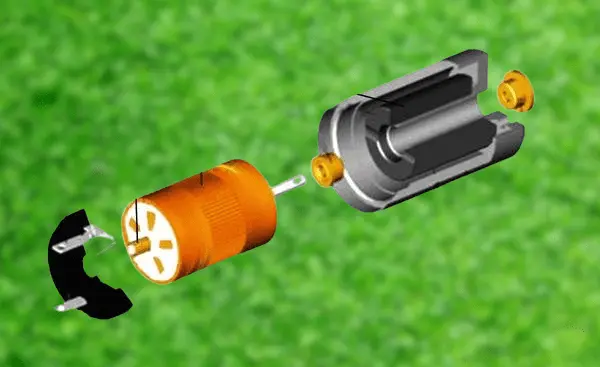Recent years have seen a rise in the popularity of drones, whether for personal or business use. The coreless motor is one of the essential elements that make it possible for these unmanned aerial vehicles to maneuver precisely and fly effectively. We will go into the realm of coreless motors in this post, looking at their design, operation, benefits, and uses. So, let’s explore the intriguing technology behind coreless motors for drones.
What is a Coreless Motor?
A common kind of electric motor used in drones and other small-scale applications where high-performance, lightweight, and compact motors are needed is the coreless motor. Unlike conventional motors with ferromagnetic cores, coreless motors have a rotor without any iron, which makes them perfect for drone propulsion.
Construction of Coreless Motors
The coil, rotor, magnet, and housing are some of the essential parts of coreless motors. The coil, which is constructed of thin copper wire, is placed within the housing after being twisted into a cylindrical shape. The shaft is attached to the rotor, which is often composed of lightweight material like aluminum. A magnetic field is produced by a group of permanent magnets that surround the rotor. Coreless motors differ from conventional motors in that the rotor does not have an iron core.
Working Principle of Coreless Motors
A magnetic field is produced when an electric current is applied to the coil in a coreless motor. The rotor rotates as a result of the interaction between this magnetic field and the magnetic field produced by the permanent magnets. The rotor’s inertia and mass are decreased when an iron core is absent, which leads to better responsiveness, faster rotational speeds, and less cogging effect. Coreless motors are more efficient and have a better power-to-weight ratio than their conventional equivalents.

Advantages of Coreless Motors
Coreless motors offer several advantages that make them well-suited for drone applications:
- Lightweight and Compact: Coreless motors are lighter and more compact since they lack an iron core, giving drones more maneuverability and longer flying periods.
- High Efficiency: Since coreless motors have lower electrical resistance, power losses are reduced and total efficiency is raised.
- Improved Responsiveness: Coreless motors can respond quickly to changes in input signals due to the lower rotor inertia, which results in accurate control and maneuverability.
- Low Vibration and Noise: Coreless motors run silently and smoothly, reducing noise and vibrations when a drone is in operation.
Choosing the Right Coreless Motor for Your Drone
There are various things to take into account when choosing a coreless motor for your drone:
- Thrust Requirements: Choose a motor with a powerful output based on the thrust needed to lift your drone.
- Voltage and Current Ratings: Make sure the motor is appropriate for the power system of your drone by paying attention to the ratings for voltage and current.
- Weight and Size: To get the best performance, choose a motor that achieves a balance between weight and power.
- Durability and Quality: Choose a coreless motor from a respected company that is known for its dependable and high-quality goods.
Maintenance and Care for Coreless Motors
- Regular Cleaning: Clean the motors periodically to remove any debris or dust that may hinder their performance.
- Lubrication: Apply a small amount of high-quality lubricant to the motor bearings to reduce friction and enhance longevity.
- Avoid Overheating: Prevent excessive heat buildup by monitoring the operating temperature and allowing sufficient cooling time between flights.
- Check Wiring Connections: Regularly inspect the wiring connections of the motor to ensure they are secure and free from damage.
Enhancing Drone Performance with Coreless Motors
The following maintenance advice will help your drone’s coreless motors last a long time and function at their best:
- Optimize Propeller Selection: Choose propellers that are well-matched to the motor specifications and desired flight characteristics.
- Battery Selection: Select a high-quality battery with an appropriate capacity and discharge rate to provide sufficient power to the motors.
- Flight Controller Tuning: Fine-tune the flight controller settings to achieve a balance between stability and responsiveness.
- Aerodynamic Design: Consider the aerodynamic design of your drone, including weight distribution, to minimize drag and improve flight efficiency.
The Future of Coreless Motors in Drone Technology
Coreless motors are anticipated to have a substantial impact on the development of drone technology in the next years. The performance, effectiveness, and durability of coreless motors are still being improved via research and development, giving drones the potential to handle increasingly difficult tasks, resist hostile environments, and change a variety of sectors.
- Also, Read This Article:- 12V 7Ah Battery Charger Circuit Diagram
- Also, Read This Article:- 3.7Volt Li-ion Battery Charger Full Details & solution.
- Also, Read This Article:- How to Make a BLDC Motor ESC Using MOSFET
- Also, Read This Article:– 555 timer ic use throttle or accelerator sensor circuit diagram
- Also, Read This Article:- How to Make a BLDC Motor ESC Using MOSFET
- Also, Read This Article:- 5V PWM Signal Booster Convert 12V PWM Signal Generator
- Also, Read This Article:- How to Make a BLDC Motor ESC Using MOSFET
- Also, Read This Article:- RU6888r Mosfet Datasheet Full Details Download Free
Conclusion
Drones need coreless motors because they provide lightweight, compact, and effective propulsion solutions. Coreless motors’ distinctive features and benefits provide drones an edge in terms of maneuverability, reactivity, and flying performance. Drone enthusiasts and experts may maximize the performance of their drones and open up new opportunities in aerial technology by making well-informed decisions based on a thorough understanding of the design, operation, and uses of coreless motors.
FAQ
Do coreless motors require any specific motor controllers?
With appropriate motor controllers that are frequently utilized in drone applications, coreless motors can be used.
Can coreless motors be repaired if they get damaged?
Depending on the severity of the damage, coreless motors can occasionally be fixed by swapping out particular parts like coils or bearings.